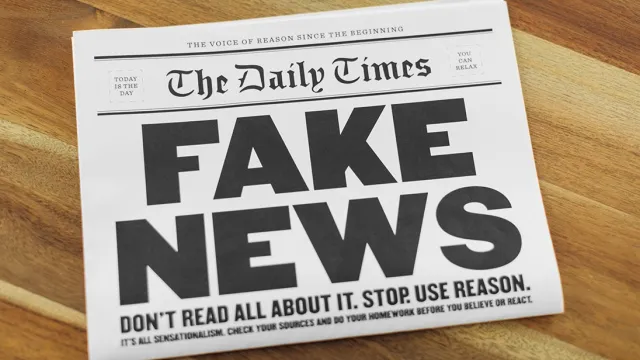In the fog of fake news

In the fog of fake news
When I took journalism course in university I knew the foundation of modern journalism lay in the print era, where newspapers served as the primary source of news and journalists played a crucial role in gathering information, investigating stories and disseminating news to the public.
But over the years, I started noticing the way we consume news has gone through great changes from the days of print newspapers to the advent of online platforms and social media and not always for the better.
Instant news is not new, the advent of radio and television, revolutionized news delivery because it introduced immediacy and visual storytelling, enabling journalists to reach a wider audience. TV used to offer breaking news and live coverage but with laborious equipment and prohibitive costs.
The generation, production and consumption of news has undergone a seismic shift with the emergence of the internet and digital technologies. Today with the rise of the digital mobile phone and high internet penetration, news stories are now reported in real-time allowing viewers to witness events as they unfold.
Online and social media platforms such as websites, twitter, Instagram and Youtube has created new avenues for disseminating news. The barrier to entry also lowered, allowing anyone with a smartphone and an internet connection to become a news source, thus citizen journalism.
However, while the digital age has increased access to information, it also presents challenges to traditional journalism because the 24/7 news cycle demand constant content generation. Clickbait and sensationalism have also become prevalent as media outlets vie for online attention and ad revenue.
In its vintage days, the media industry was characterized by a strict editorial hierarchy, fact-checking processes and a focus on delivering reliable and objective reporting. There was also trust built over years of personal branding with household names like Jeff Koinange, Trevor Ombija, Lulu Hassan and many others in the industry establishing themselves as trusted sources of information.
With the influx of the internet this is no longer the case.
According to Modestor, an upcoming journalist, journalists now face the task of combating falsehoods while upholding the principles of accuracy and objectivity in a world proliferated with misinformation and fake news which has led to a crisis of trust.
“Fact-checking and verification have become even more critical in this era where misinformation can spread rapidly and fake news is everywhere. You have to prove yourself as trustworthy and earn the trust of the public especially if you work as a freelancer or if your organisation is not well-known” she said.
As news consumption becomes increasingly fragmented and personalized, the role of journalists as gatekeepers of information has also evolved. Journalists must now navigate ethical challenges posed by the digital age. They must balance the need for engaging content with their responsibility to provide accurate, balanced and fair reporting.
A senior local journalists I talked to recently said he feels that media practitioners in this era have to be analytical in their reporting. This means going beyond reporting facts and events as to provide context, encourage critical thinking, uncover hidden truths, combat misinformation and enhance public debate. Journalism also offers predictive analysis while promoting transparency and accountability.
Furthermore, the rigorous research, fact-checking and presenting various perspectives equips the readers with tools to make informed judgements, question assumptions and actively participate in public affairs.
While challenges persist, journalists continue to adapt and find new ways to serve the public interest. Their role in society remains indispensable, ensuring that reliable, ethical and high-quality news continues to be disseminated amidst the ever-changing media landscape.



